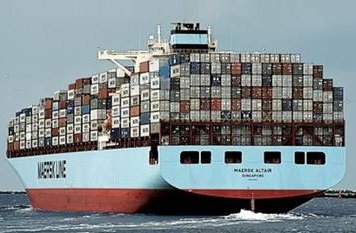ORGANIZATIONS
THEIR MAIN CHARACTERISTICS
THE WAY TEAMWORK GETS THINGS DONE
|
Huge corporate organizations dominate everything
... many believe that profit is the main and only thing
|
|
DIGITAL TECHNOLOGY (SEARCH)
|

Google
|
|
|
|
|
|
|
DIGITAL TECHNOLOGY (CORPORATE PRODUCTIVITY)
|

IBM
|

Microsoft
|

Oracle
|
|
|
|
|
DIGITAL TECHNOLOGY (SOCIAL MEDIA)
|

Facebook
|

Twitter
|
TikTock
|
|
|
|
|
DIGITAL TECHNOLOGY (TELEPHONES-MOBILE PHONES)
|

Apple
|
|
|
|
|
|
|
FINANCIAL SECTOR (STOCK MAKRETS )
|

NYSE
|
|
|
|
|
|
|
FINANCIAL SECTOR (US BANKS)
|

J.P.Morgan Chase
|

CitiBank
|

Bank America
|

Wells Fargo
|
|
|
|
FINANCIAL SECTOR (UK BANKS)
|
Bank of England
|

HSBC
|

Barclays
|
|
|
|
|
RETAIL DISTRIBUTION
|

Walmart
|

Amazon
|
|
|
|
|
|
AIRCRAFT ENGINES
|

Rolls Royce
|
GE
|
|
|
|
|
|
CIVIL AIRCRAFT
|

Boeing
|

Airbus
|
|
|
|
|
|
TELECOM
|

AT&T
|
|
|
|
|
|
|
OCEAN CARGO
|

Maersk
|
|
|
|
|
|
|
ENERGY (OIL AND GAS)
|

ExxonMobil
|

BP
|
|
|
|
|
Small Business, Franchises and Others play a part
... all of these make an important community contribution
|

Small Business
|

Franchises
|

Travel
|

Cricket
|

Soccer
|

Islam
|
CONVENTIONAL FINANCIAL REPORTING IS EVERYWHERE
MORE AND MORE IMPACT REPORTING IS BECOMING A NEW NORMAL
ORGANIZATIONS: Banks / E-Business / Big retail / Franchise chains / Small business
|
|
Organizations report more than any other part of the socio-enviro-economic system, but the focus is all about financial performance and the impact for owners / investors. External impacts are ignored in conventional accounting and financial reporting. TVIA builds on the existing conventional accounting making it possible to also report on material externalities that impact people, society and the environment.
|
- Almost the whole of global GDP flows through corporate business organizations
- They are responsible for the deployment of technological innovations to improve productivity
- They optimize their decisions to maximize profits and benefit for stockholders.
- To a great extent, they ignore social impact and environmental impact and push back against regulation ... even where there are critical needs
|
|
THE ROLE ... THE IDEA ... OF ORGANIZATION
|
Organization is essential to managing at scale. Big projects take organization. Think about building the pyramids in Egypt and winning WWII.
Without organization there is chaos. Sophisticated organization is one of the things that has made modern productivity possible.
Organizations have been a very important part of economic and financial performance for several hundred years. The metrics used in for-profit organizations to manage profit improvement have been very effective, but insufficient because they have ignored externalities up until now.
There are many types of organizations, and many individual organizations. All of them have different characteristics. Some are making profit and doing good. Others are making profit and doing immense damage to society and / or the environment. We need to know a lot more about these characteristics in a way that is efficient, timely and relevant.
No organization can be successful 'on its own' ... a successful organizations understands the context where it is working and acts accordingly.
The most successful organizations are those that have a meaningful social purpose as well as being able to give a decent return to the investors that fund the organization.
The idea that the main purpose of an organization is merely to make the maximum return for the owners is a legal construct that originated in the USA in the 1920s when Henry Ford and the Dodge Brothers were engaging in very unfriendly litigation ... rather the main purpose of many great organizations has been to do good for society as, for example, the manufacture of Sunlight Soap in the 1880s in order to improve health by a company that went on to become Unilever
Organizations have been a very important part of economic and financial performance for several hundred years. The metrics used in for-profit organizations to manage profit improvement have been very effective, but insufficient because they have ignored externalities up until now.
There are many types of organizations, and many individual organizations. All of them have different characteristics. Some are making profit and doing good. Others are making profit and doing immense damage to society and / or the environment. We need to know a lot more about these characteristics in a way that is efficient, timely and relevant.
|
|
ORGANIZATIONS: ESSENTIAL TO MANAGING AT SCALE
|
Organizations are a critical component of the socio-enviro-economic system that enables efficiency. It is of vital importance to understand the role of organizations.
ORGANIZATIONS ARE USED TO IMPLEMENT IDEAS.
... Organizations have been a very important part of economic and financial performance for several hundred years. The metrics used in for-prof
it organizations to manage profit improvement have been very effective, but insufficient because they have ignored externalities up until now.
MANY DIFFERENT TYPES OF ORGANIZATION
There are many types of organizations, and many individual organizations. All of them have different characteristics. Some are making profit and doing good. Others are making profit and doing immense damage to society and / or the environment. We need to know a lot more about these characteristics in a way that is efficient, timely and relevant.
ORGANIZATION
Organization provides a framework for getting things done and achieving operational efficiency. It applies in all types of activity. Without organization there is chaos, and this rarely gets to a good outcome.
ORGANIZATIONS
There are many different ways to organize ... different approaches ... different stakeholders ... different ownership ... but essential for performance efficiency
PRIVATE SECTOR ORGANIZATIONS
The best contribute significantly to quality of life, but the worst to immense damage to the environment and to society.
FOR PROFIT ORGANIZATIONS
Profit is an important driver of economic efficiency, but it is not the only important metrics of performance. Profit is an efficient metric related to money capital formation, but not so much for the environment and society.
NOT FOR PROFIT ORGANIZATIONS / NGOs
Not-for-Profits exist to do good without a profit motivation. They are supported mainly by philanthrpy and to some extent by government grants.
|
NAVIGATION VIA DIFFERENT GROUPS OF ORGANIZATIONS
There are many types of organizations, and many individual organizations. All of them have different characteristics. Some are making profit and doing good. Others are making profit and doing immense damage to society and / or the environment. We need to know a lot more about these characteristics in a way that is efficient, timely and relevant.
|
|

